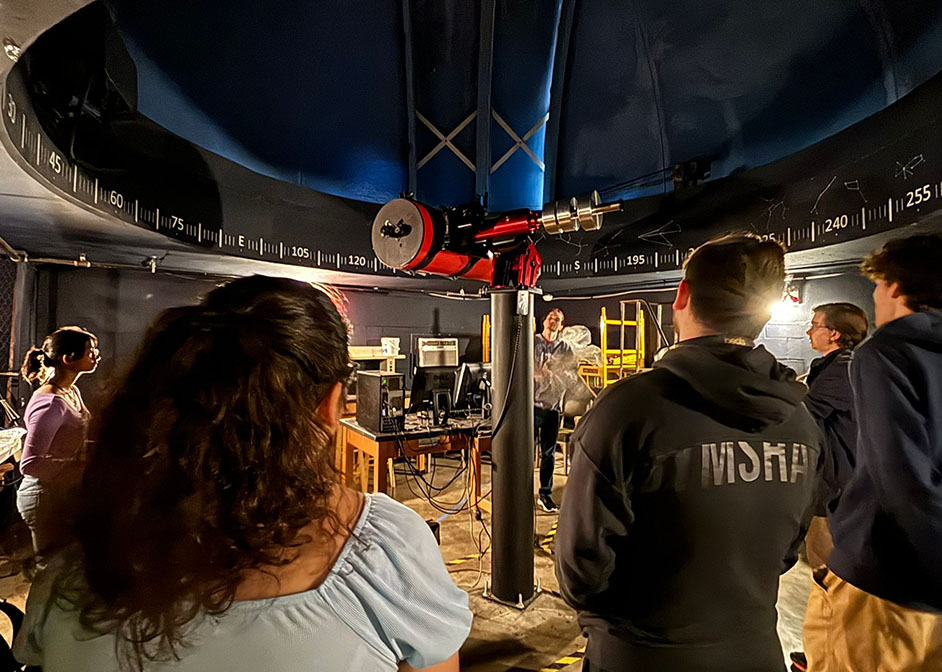Viewing Opportunities Available via Observatory Telescope, Demonstration Tents and More
Eclipse Viewing on Campus – April 8

Times: 12:20 p.m.–3:01 p.m. (Maximum Coverage of Sun ~1:40 p.m.)
Locations:
- UH Observatory: Top of Science and Research Building 1 (SR1)
- Front of M.D. Anderson Library
- Outside Philip Guthrie Hoffman (PGH) Hall
On Monday, April 8, the solar eclipse will be seen across North America, moving from Mexico to the United States and Canada. In the contiguous U.S., it will start in Texas and end in Maine. Compared to the 2017 total eclipse, its path will be wider, traversing more cities with an estimated 31.6 million people living in the path of totality. Only 12 million people lived in the path of totality in 2017.
Though Houston is not in the path of totality, the moon will still block the sun at a maximum of 94% at around 1:40 p.m. The partial eclipse in Houston will begin at 12:20 p.m. and end at 3:01 p.m.
At the University of Houston, a variety of safe viewing opportunities will be available for this educational experience. The UH Observatory on top SR1 will be open for eclipse viewing through the big telescope. The observatory can be accessed by traversing a flight of stairs at the end of the long hallway directly across from the sixth-floor elevators. Demonstration tents will also be set up outside the library and PGH Hall. These activities are being organized by the Astronomy Society at UH, Society for the Advancement of Chicanos/Hispanics and Native Americans in Science (SACNAS) UH chapter, and the UH Department of Physics.
Live NASA video of the total eclipse will also be streaming on select screens inside SR1.
- Chris Guillory, College of Natural Sciences and Mathematics